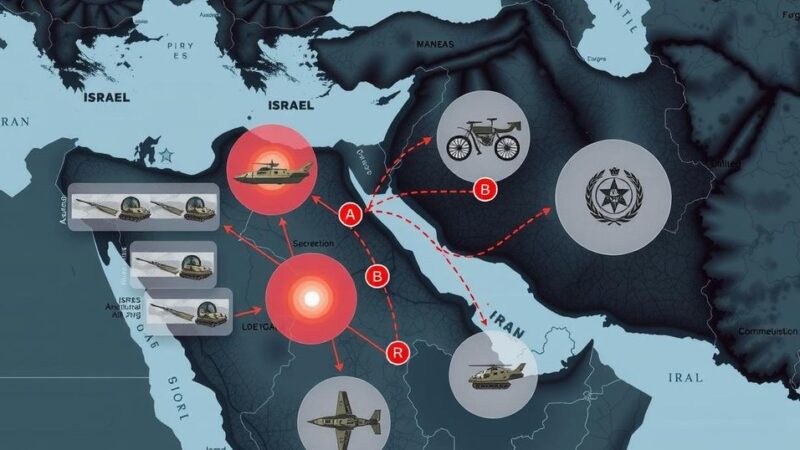Colombia is facing a resurgence of political and criminal violence, threatening its fragile peace process. Recent attacks by the ELN and dissident FARC groups expose risks to stability, despite previous peace agreements. The government seeks to implement a ‘total peace’ strategy under President Gustavo Petro, yet local organizations show promise in aiding transitions for former combatants amid ongoing violence.
Colombia has seen a rise in both political and criminal violence in recent months. In February, the National Liberation Army (ELN) initiated four bombings in Cúcuta, resulting in injuries and prompting the deployment of 1,200 soldiers. Additionally, in March, dissidents from the Revolutionary Armed Forces of Colombia (FARC) abducted 29 members of the security forces due to government initiatives aimed at eradicating coca cultivation in the Cauca region.
The peace process in Colombia appears increasingly precarious as both leftist insurgent groups and drug cartels persist in exerting their influence. Despite the peace agreement reached in 2016 with FARC, which was designed to demobilize the group and end the longstanding conflict, new threats have emerged from factions that reject the terms of this agreement, including the ELN and various dissident groups.
FARC’s insurgency began in the 1960s and evolved over decades, leading to widespread violence and casualties, including over a quarter of a million deaths. The Colombian government implemented a comprehensive peace strategy in 2016 promising investment in rural areas and political representation for former rebels, yet several armed groups continue to resist the prevailing peace.
The ELN has consistently rejected peace negotiations since 1964 and has carried out numerous attacks, including a significant bombing in 2019 that resulted in 21 fatalities. Additional issues arise as demobilized FARC members face threats from dissident factions, potentially triggering a resurgence in armed conflict. Meanwhile, neo-paramilitary groups, such as Clan del Golfo, also vying for land and power through illegal activities, pose additional challenges to stability.
With the election of President Gustavo Petro in 2022, a renewed strategy called “total peace” was initiated, aiming to disarm remaining insurgents and organized crime. However, obstacles to peace talks have persisted, exacerbated by the reduction of U.S. foreign aid, which previously supported anti-crime initiatives and community development.
Despite governmental setbacks, localized community organizations have emerged as pivotal players. They work towards rehabilitating former combatants and addressing underlying social issues fueling violence, indicating potential pathways to lasting peace in Colombia. The ongoing violent episodes serve as a crucial reminder that the country’s internal armed conflict remains unresolved.
The current state of Colombia’s peace process is tenuous as various armed groups continue to perpetrate violence and disrupt stability. The resurgence of factions such as the ELN and dissident FARC members, paired with the challenges posed by neo-paramilitary organizations, complicates efforts toward achieving lasting peace. Community-based initiatives have emerged as vital components in facilitating the reintegration of former combatants and addressing social injustices, highlighting that while significant progress has been made, the journey towards sustainable peace in Colombia is far from over.
Original Source: sightmagazine.com.au






